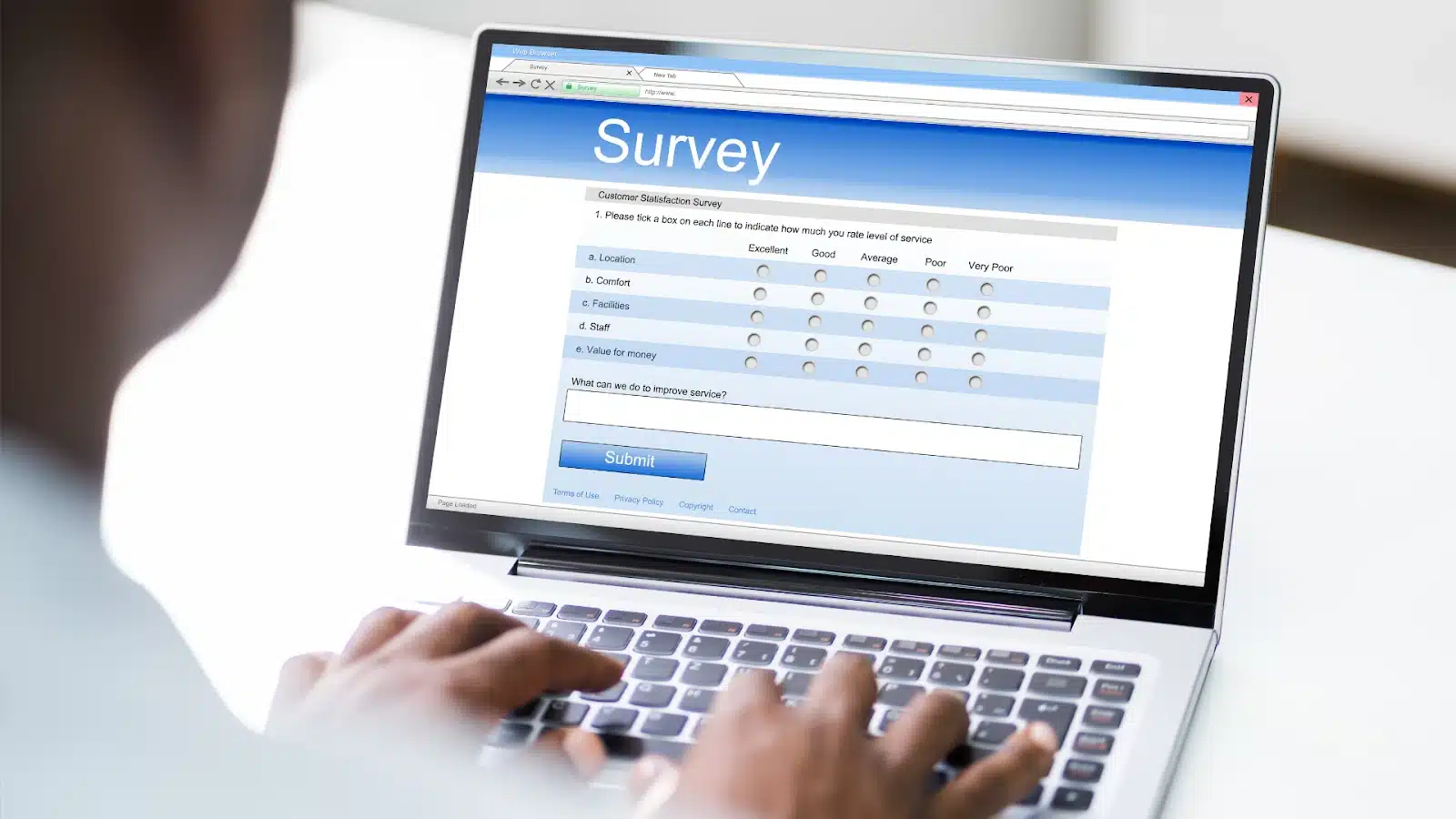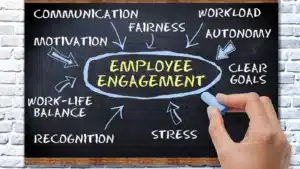
Writing Employee Satisfaction Surveys That Lead to Real Change
Writing effective employee satisfaction surveys is crucial for organizations seeking to foster a positive work environment. These surveys not only gauge employee sentiment but also provide actionable insights that can lead to meaningful changes. This article explores the best practices for crafting surveys that truly resonate with employees and drive real change within organizations.
Understanding the Importance of Employee Satisfaction Surveys
Employee satisfaction surveys serve as a vital tool for organizations to measure the overall morale and engagement levels of their workforce. By collecting feedback, companies can identify areas of improvement, recognize employee contributions, and ultimately enhance workplace culture. These surveys not only provide a snapshot of employee sentiment but also help in tracking changes over time, allowing organizations to assess the impact of initiatives aimed at improving employee well-being.
Moreover, these surveys can empower employees by giving them a voice in the organization. When employees feel heard, they are more likely to be engaged and committed to their work, leading to increased productivity and retention rates. This sense of empowerment can also foster innovation, as employees who feel valued are more inclined to share their ideas and contribute to the organization’s success.
Building Trust Through Anonymity
One of the key factors in obtaining honest feedback from employees is ensuring anonymity. When employees know their responses are confidential, they are more likely to express their true feelings about their job satisfaction, management, and workplace culture. This trust is essential for gathering accurate data that can inform decision-making. Furthermore, maintaining anonymity can help to mitigate fears of repercussions, encouraging a more candid dialogue about sensitive topics such as workload, management practices, and interpersonal relationships within the team.
To maintain anonymity, organizations can use various survey tools that allow respondents to submit their feedback without revealing their identities. This approach not only encourages participation but also fosters a culture of openness and honesty. Additionally, organizations can communicate the importance of these surveys and how the data will be utilized, reinforcing the commitment to transparency and continuous improvement.
Crafting Relevant Questions
The effectiveness of an employee satisfaction survey hinges on the quality of its questions. Questions should be clear, concise, and relevant to the employees’ experiences. Avoid ambiguous language and ensure that each question serves a specific purpose. It can be beneficial to involve employees in the question-design process, as this can lead to more meaningful inquiries that resonate with their daily experiences and challenges.
Consider including a mix of quantitative and qualitative questions. While numerical ratings can provide measurable data, open-ended questions allow employees to elaborate on their thoughts, offering deeper insights into their experiences and suggestions for improvement. Additionally, incorporating scenario-based questions can help employees reflect on specific situations they have encountered, providing richer context to their feedback. By thoughtfully crafting survey questions, organizations can gain a comprehensive understanding of employee satisfaction and areas that require attention.
Designing the Survey for Maximum Engagement
Survey design plays a critical role in encouraging participation. A well-structured survey that is visually appealing and easy to navigate can significantly increase response rates. Here are some key design elements to consider:
Keep It Short and Sweet
Employees are often busy, and lengthy surveys can lead to frustration and disengagement. Aim to keep surveys concise, ideally under 15 minutes to complete. Focus on the most critical areas of employee satisfaction to ensure that the survey remains relevant and engaging.
Utilizing skip logic can also help streamline the survey experience. This technique allows respondents to skip questions that are not applicable to them, making the survey more personalized and efficient. By tailoring the questions to the individual’s experiences, you not only respect their time but also enhance the quality of the feedback received.
Utilize Engaging Formats
Incorporating various formats can make the survey more engaging. Instead of relying solely on traditional multiple-choice questions, consider using sliders, rating scales, or even visual elements like images to represent satisfaction levels. This variety can make the survey feel less monotonous and encourage more thoughtful responses.
Additionally, including a section for comments or suggestions can provide employees with the opportunity to share their thoughts in their own words, further enriching the data collected. Open-ended questions can uncover insights that structured questions might miss, allowing for a deeper understanding of employee sentiments and areas for improvement. Furthermore, offering a mix of quantitative and qualitative questions can help paint a more comprehensive picture of the workplace environment.
Another effective strategy is to incorporate gamification elements into the survey. By adding points, badges, or progress bars, you can create a sense of achievement and motivation for respondents. This approach not only makes the survey more enjoyable but can also foster a sense of community and competition among employees, encouraging them to complete the survey and share their experiences with colleagues.
Communicating the Purpose and Importance
To ensure high participation rates, it is essential to communicate the purpose and importance of the survey to employees. Clearly articulate how their feedback will be used to drive change within the organization. This transparency can motivate employees to take the survey seriously and invest their time in providing thoughtful responses. Additionally, framing the survey as an opportunity for employees to express their opinions and influence the workplace culture can further enhance their willingness to participate. When employees understand that their insights can lead to meaningful improvements, they are more likely to feel empowered and engaged in the process.
Share Past Outcomes
One effective way to build trust and encourage participation is by sharing the outcomes of previous surveys. When employees see that their feedback has led to tangible changes, they are more likely to engage in future surveys. Highlighting specific actions taken as a result of past feedback can reinforce the idea that their voices matter. For instance, if a previous survey revealed a need for flexible working hours, and the organization subsequently implemented a new policy, sharing this success story can serve as a powerful motivator. Furthermore, showcasing how these changes have positively impacted employee morale and productivity can create a sense of collective achievement and foster a culture of continuous improvement.
Follow Up on Results
Once the survey is complete, it is crucial to share the results with employees. Providing a summary of the findings demonstrates that the organization values its input. More importantly, it sets the stage for discussions about potential changes and improvements based on the survey data. This follow-up should not only include the results but also a clear action plan that outlines how the organization intends to address the feedback received. By doing so, employees can see a direct correlation between their participation and the organization’s responsiveness to their needs.
Engaging employees in these conversations can further enhance their sense of ownership and commitment to the organization’s goals. It also opens the door for ongoing dialogue about workplace satisfaction and areas for improvement. Creating forums, such as town hall meetings or small group discussions, where employees can voice their thoughts on the survey results, fosters a collaborative atmosphere. This not only encourages further participation in future surveys but also builds a community where employees feel heard and valued. Additionally, providing opportunities for employees to suggest new initiatives or improvements based on the survey findings can lead to innovative solutions that benefit the entire organization.
Implementing Changes Based on Feedback
The ultimate goal of employee satisfaction surveys is to drive real change within the organization. However, collecting feedback is only the first step; organizations must be prepared to act on the insights gained from the survey.
Prioritize Actionable Insights
After analyzing the survey results, organizations should prioritize actionable insights that can lead to meaningful improvements. This may involve addressing common concerns, such as workload, communication, or recognition. By focusing on the most pressing issues, organizations can create a more positive work environment.
Involving employees in the decision-making process can also enhance the effectiveness of these changes. By seeking their input on potential solutions, organizations can ensure that the actions taken align with employees’ needs and expectations.
Establish a Feedback Loop
Creating a feedback loop is essential for maintaining ongoing employee satisfaction. After implementing changes, organizations should continue to solicit feedback to assess the effectiveness of their actions. This iterative process allows organizations to adapt and refine their strategies based on employee input continuously.
Regular check-ins, pulse surveys, or informal discussions can help gauge employee sentiment and ensure that the organization remains responsive to their needs. This commitment to continuous improvement can foster a culture of engagement and satisfaction.
Leveraging Technology for Enhanced Engagement
In today’s digital age, leveraging technology can significantly enhance the effectiveness of employee satisfaction surveys. Various tools and platforms can streamline the survey process, making it easier for organizations to collect, analyze, and act on feedback.
AI-Powered Solutions
AI-powered platforms can offer real-time analysis of survey data, helping organizations quickly identify trends and areas for improvement. These tools can also automate follow-up processes, ensuring that feedback is acknowledged and acted upon promptly.
For instance, using a platform that integrates AI-driven Q&A features can enhance engagement during presentations or discussions about survey results. This technology allows employees to ask questions and receive instant answers, fostering a more interactive and engaging environment.
Seamless Integration with Existing Tools
Choosing survey tools that seamlessly integrate with existing systems, such as CRM or project management software, can streamline the feedback process. This integration allows organizations to track engagement metrics and analyze data more effectively, leading to more informed decision-making.
Moreover, utilizing SMS-based engagement platforms can enhance participation rates, as employees can easily access surveys via text messages without the need for downloads or logins. This frictionless approach can significantly increase response rates and improve the overall survey experience.
Measuring the Impact of Changes
After implementing changes based on employee feedback, it is essential to measure the impact of those changes. This evaluation can help organizations understand the effectiveness of their actions and identify areas for further improvement.
Establish Key Performance Indicators (KPIs)
Establishing KPIs related to employee satisfaction can provide valuable insights into the success of implemented changes. Metrics such as employee retention rates, productivity levels, and overall engagement scores can help organizations assess the impact of their efforts.
Regularly reviewing these KPIs can also inform future survey initiatives, allowing organizations to adapt their strategies based on evolving employee needs and expectations.
Soliciting Ongoing Feedback
To maintain a culture of continuous improvement, organizations should prioritize ongoing feedback. Regular pulse surveys or informal check-ins can help gauge employee sentiment and ensure that the organization remains responsive to their needs.
By fostering an environment where employees feel comfortable sharing their thoughts and concerns, organizations can build a more engaged and satisfied workforce.
The Impact of Surveys Done Right
Writing employee satisfaction surveys that lead to real change requires careful planning, thoughtful design, and a commitment to acting on feedback. By prioritizing anonymity, crafting relevant questions, and leveraging technology, organizations can create surveys that resonate with employees and drive meaningful improvements.

Ultimately, the goal is to foster a culture of engagement and satisfaction, where employees feel valued and empowered to contribute to the organization’s success. By implementing the strategies outlined in this article, organizations can transform their employee satisfaction surveys into powerful tools for positive change.
For organizations looking to enhance their presentation and engagement strategies, consider exploring innovative solutions that streamline the feedback process and drive real results.
Take Your Employee Engagement to the Next Level with PresEngage
Ready to revolutionize your employee satisfaction surveys and presentations? PresEngage offers an AI-powered SMS Q&A platform that brings real-time interaction to your organization, without the need for apps or additional software. Engage your employees more effectively, address their questions instantly, and gather CRM-able data to drive continuous improvement. Elevate your engagement strategy and experience the power of seamless, interactive communication. Start for FREE today and transform your employee feedback sessions into dynamic, impactful conversations.
Present Smarter. Engage Answer Convert Close Remarkably.
Dazzle your audience with Real-Time Q&A powered by your AI Co-Presenter.(Patent Pending)
PresEngage™ makes you look brilliant by connecting with everyone, instantly.
No Credit Card Required. 100% Risk Free.
Frictionless Audience Experience GUARANTEED.






